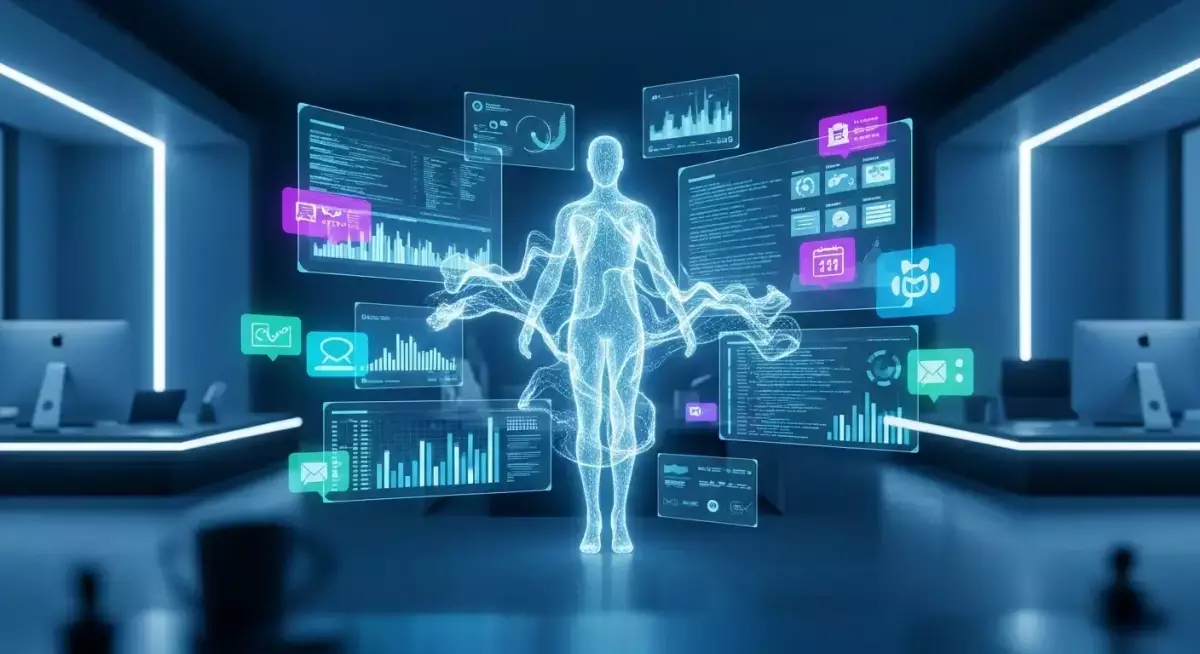Why AI Agents Could Change Everything Faster Than You Think
-
![Avatar]() By ryker
By ryker
- October 02, 2025
- 2 min read
- 0 Comments

Picture this: you wake up, grab your coffee, and while you scroll your feed, an AI assistant has already drafted emails, scheduled your meetings, gathered research for a project, and maybe even started writing code. That’s not a scene from science fiction anymore. It’s where technology is heading right now, thanks to the rapid rise of autonomous AI agents
Generative AI has already reshaped how we create content, design visuals, and brainstorm ideas. OpenAI’s ChatGPT and Google’s Gemini are the most well-known examples, but AI agents are the next step. They are designed not just to answer questions but to actually get things done.
What Exactly Are AI Agents?
At the simplest level, they’re pieces of software that can observe, decide, and act without needing your constant input. Instead of one-off responses, agents can chain together tasks, adjust their approach when something doesn’t work, and keep moving toward a goal. Think of them less like chatbots and more like digital interns who never get tired.
Some real examples are already out there:
- AutoGPT an open-source project that shows how agents can run multi-step tasks.
- LangChain a popular framework for building custom AI workflows.
- Research bots that browse the web and summarize findings for users.
They’re far from perfect, but the building blocks are already solid and improving fast.
Why They Matter
The hype isn’t just about novelty. Here’s why this shift is big:
- More Productivity
Tasks that normally eat up hours, like gathering data or managing calendars, could be handled automatically. That’s time back in your pocket. - Easier Access
You won’t need to be a programmer to benefit. Soon, spinning up a custom agent to handle workflows could be as easy as downloading an app. - New Risks
More autonomy also means more chances for things to go wrong. Agents that optimize badly might waste resources, misinterpret goals, or even act in unexpected ways. Guardrails will matter a lot. - Shifts in Work
Repetitive, process-heavy roles could shrink, while jobs that involve managing, guiding, or designing agents will grow in value.
The Roadblocks
AI agents aren’t flawless yet. Challenges include:
- Trust and safety: making sure agents don’t go off course or exploit loopholes. The Partnership on AI
is one group working on responsible AI use. - Generalization: most current agents still only work well in narrow contexts.
- Transparency: users need clear insight into why an agent chose a certain action.
- Infrastructure: running these systems can be expensive and resource-hungry.
What to Expect Next
Looking ahead to 2025 and 2026, a few trends seem likely:
- Agent marketplaces where you can pick and install ready-made agents for specific tasks.
- Human-in-the-loop systems where people guide or override agents in sensitive areas.
- New regulations defining liability and setting rules for agent safety, as seen in Europe’s AI Act
- Agents that build other agents, forming layered, modular systems.
- No-code tools that let anyone design simple AI-driven workflows.
Getting Ahead Today
If you’re curious, you can start small:
- Try frameworks like BabyAGI or LangChain.
- Build domain-specific agents in areas you know well.
- Learn about prompt design, feedback loops, and safe deployment.
Autonomous AI agents aren’t just a future prediction anymore. They’re emerging right now, and the people who understand and adapt early will have a serious advantage.
-
1
-
0
-
0
-
0
-
0
-
0
-
0
-
0

